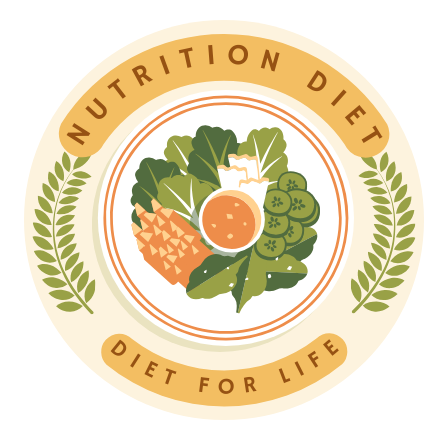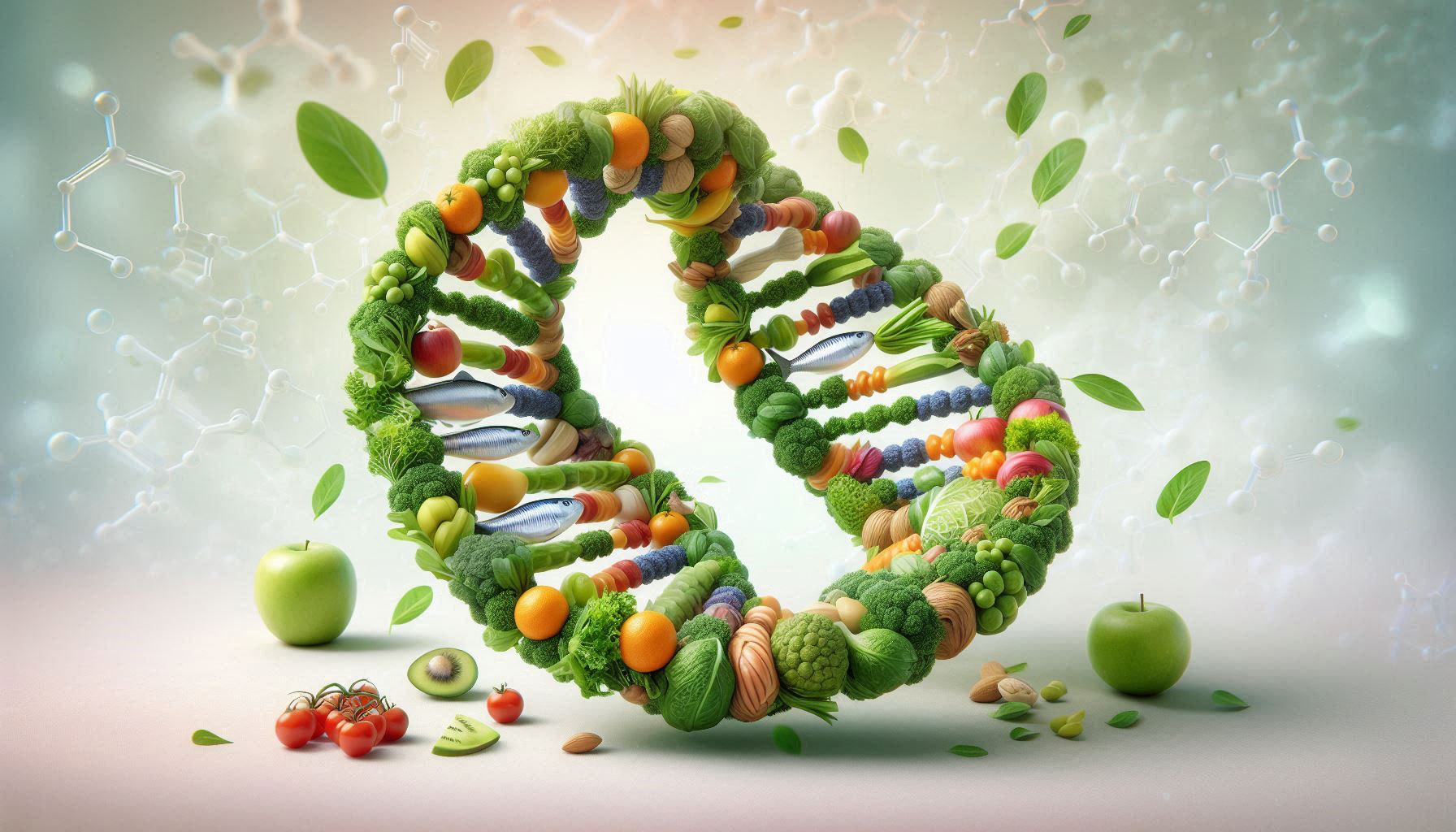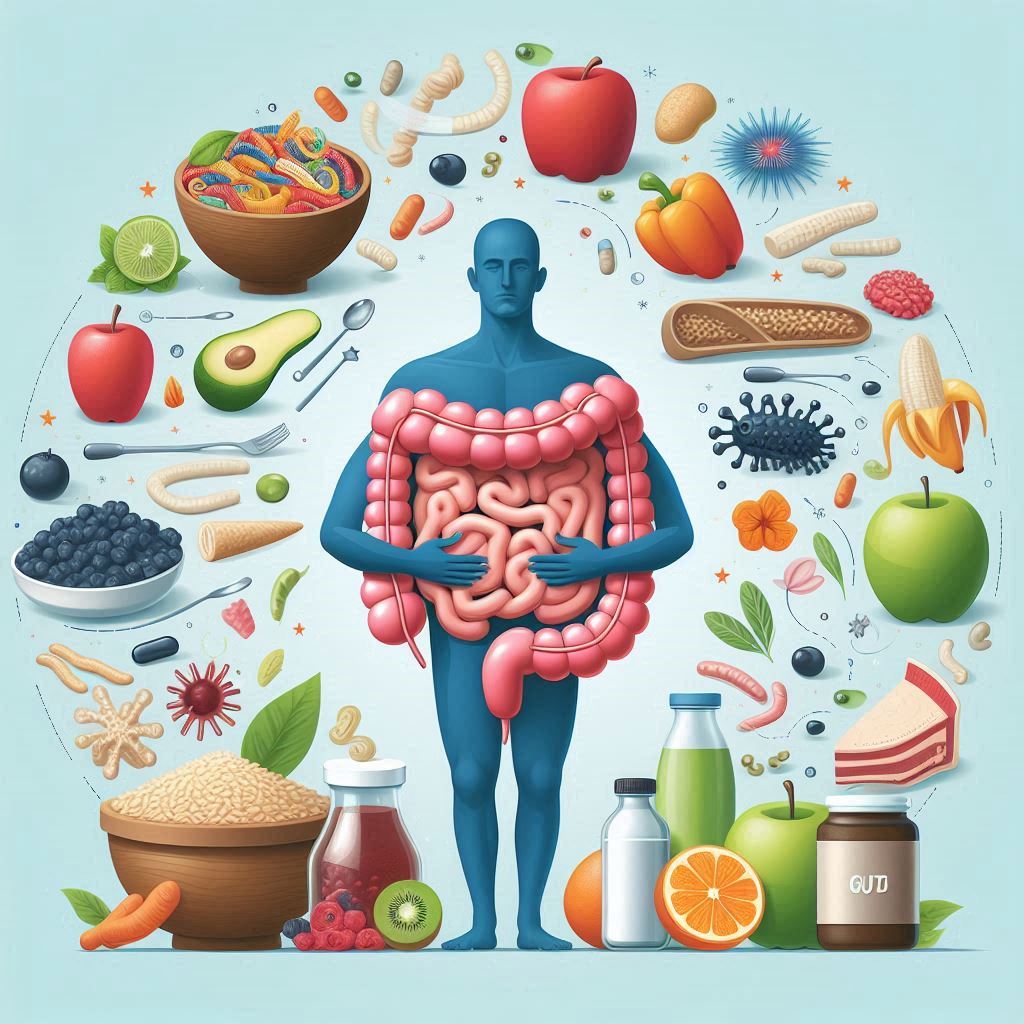Imagine if your nutrition plan could be written by your DNA—customized not by a trendy diet, but by the genetic blueprint that makes you you. Welcome to the frontier of nutrigenomics: a science that explores how your genes influence your body’s nutritional needs and how the nutrients you consume affect your genes.
The one-size-fits-all model of nutrition is slowly being replaced by precision nutrition, where eating right means understanding the language of your genome. You might have wondered why some people thrive on a high-fat diet while others gain weight. Or why your friend can drink three coffees after dinner and sleep like a baby—while you lie awake after one cappuccino at 2 PM. The answer may be hidden in your genes.
At the core of nutrigenomics lies the idea that genetic variation affects how we metabolize vitamins, minerals, fats, carbs, and more. Even the way we detoxify caffeine, regulate appetite, and manage inflammation can depend on single nucleotide polymorphisms (SNPs)—small differences in our DNA that can have a big impact.
This article takes a deep dive into the science, ethics, and real-life application of nutrigenomics—arming you with everything you need to make informed, gene-smart dietary decisions. Whether you’re a clinician, bio hacker, or simply curious about optimizing your health, the insights here are grounded in current research and practical for daily life.
The Science behind the DNA–Nutrient Link
What Is Nutrigenomics, Really?
Nutrigenomics (a blend of “nutrition” and “genomics”) is the study of how our diet interacts with our genes. It answers questions like:
- How does vitamin D absorption vary based on your VDR gene?
- Why might someone with a certain MTHFR gene variant need more foliate?
- Can certain genes make you more sensitive to saturated fats?
Unlike general nutrition, which applies broad guidelines (like the RDA); nutrigenomics aims to individualize those guidelines based on genetic expression, polymorphisms, and epigenetic factors.
Genetic Basics: What You Need to Know
To understand nutrigenomics, you need a basic vocabulary of genetics:
- Genes are segments of DNA that code for proteins. These proteins carry out nearly all body functions, from enzyme production to hormone signaling.
- SNPs (Single Nucleotide Polymorphisms) are tiny genetic variations—differences in a single base pair in your DNA sequence. Some SNPs are benign, others may affect how well you absorb B12, respond to caffeine, or process carbs.
- Epigenetics refers to changes in gene expression (turning genes “on” or “off”) influenced by lifestyle factors like diet, exercise, stress, and exposure to toxins.
Nutrients–Gene Interactions: Real-World Examples
Here are some of the best-studied nutrient–gene relationships:
- Vitamin D & VDR Gene: The VDR gene encodes the vitamin D receptor, which affects how well your body uses vitamin D. Variants like Foci or Tie may result in lower activation of vitamin D, meaning some individuals need higher dietary or supplemental intake.
- Foliate & MTHFR Gene: MTHFR (methylenetetrahydrofolate reeducates) is crucial for foliate metabolism. People with variants like C677T may convert folic acid less efficiently into its active form (L-methylfolate), raising their risk of neural tube defects or high homocysteine levels.
- APOE & Fat Metabolism: The APOE gene (particularly the ε4 variant) is linked to higher cholesterol and a greater risk for Alzheimer’s and cardiovascular disease. Those with the ε4 variant often benefit from reduced saturated fat and cholesterol intake.
Your Genetic Blueprint: What It Reveals About Your Nutrient Needs
Genetic Testing: What You Can Learn
Direct-to-consumer genetic tests (like 23andMe, Nutrigenomix, and others) can provide insights into your risk for:
- Nutrient deficiencies
- Food intolerances (e.g., lactose, gluten)
- Weight gain from certain macronutrients
- Inflammatory or oxidative stress profiles
What These Tests Actually Show
Most reports are based on SNPs. Each SNP result usually indicates:
- Genotype (e.g., AA, AG, or GG): The combination of alleles you inherit from your parents.
- Impact rating: Minimal to high effect on nutrient processing.
- Actionable advice: For example, “Consider increased omega-3 intake if you carry the FADS1 variant.”
Important: These results are probabilistic, not deterministic. Having a certain SNP doesn’t guarantee an outcome—it just affects your likelihood.
Interpreting Your Report: Practical Steps
- Review your results with a nutrition-literate genetic counselor or dietitian. Interpretation is key.
- Don’t obsess over single SNPs—many traits depend on polygenic risk, not just one mutation.
- Correlate with real-world biomarkers: For example, if your MTHFR variant suggests reduced foliate metabolism, check your homocysteine levels before changing your diet.
Case Study: Sarah and Her Genetic Report
- Profile: 32-year-old woman with fatigue and brain fog
- SNPs found: MTHFR C677T homozygous, COMT slow metabolizer
- Intervention: Switched from folic acid to L-methylfolate, reduced caffeine
- Result: Improved energy within 2 weeks, better focus and sleep
Tailoring Your Macronutrient Intake Genetically
No two bodies metabolize food the same way—and your genes may be the missing piece in explaining why. Nutrigenomics allows us to go beyond calorie counts and dietary fads to personalize macronutrient ratios (fats, carbohydrates, and proteins) based on your genetic blueprint.
Fat Metabolism and the APOE Gene
The APOE gene is one of the best-studied genetic markers in personalized nutrition. It codes for Apo lipoprotein E, a key protein involved in lipid transport and cholesterol metabolism. There are three common variants: ε2, ε3, and ε4.
- Individuals with ε4 (especially ε4/ε4) tend to have a higher risk for elevated LDL cholesterol and cardiovascular disease.
- Those with ε2 may actually have lower LDL, but potentially increased triglycerides.
Nutritional implications:
- Ε4 carriers benefit from a lower saturated fat intake, often below 10% of total daily calories.
- Diets rich in monounsaturated fats (olive oil, avocado) and omega-3s (fatty fish, flaxseeds) may help modulate lipid levels.
Example: Two people eating the same high-fat ketogenic diet may experience radically different outcomes: one loses weight and improves cholesterol, while the other sees their LDL spike. Their APOE status could explain this divergence.
Carbohydrate Sensitivity and the FTO Gene
The FTO gene (fat mass and obesity-associated gene) is often linked to appetite regulation, satiety, and response to dietary carbohydrates. Certain FTO variants, such as rs9939609 (An allele), are associated with:
- Increased hunger
- Preference for energy-dense foods
- Higher risk of weight gain when consuming a high-carb diet
Nutritional implications:
- Individuals with the risk variant may do better on moderate to lower-carb diets, especially focusing on low-glycemic index (GI) carbohydrates.
- They often benefit from structured meal timing, high-fiber intake, and mindful eating practices to counteract appetite deregulation.
Protein Utilization and Muscle Genes
While protein is often treated as universally beneficial, how efficiently it is used for muscle growth, recovery, and satiety can vary.
- Genes like ACTN3 (known as the “sprinter gene”) can influence muscle type, strength, and how dietary protein supports performance.
- Others, like PPARGC1A, are involved in mitochondrial efficiency and endurance.
Nutritional implications:
- Individuals with faster muscle-fiber gene expression may require higher protein intake post-exercise for optimal recovery.
- Others may metabolize protein slowly or struggle with methionine processing (a key amino acid), needing balanced intake from plant and animal sources.
Practical tip: A standard “1g protein per pound of body weight” recommendation may be too simplistic. Genetic insight can refine that number based on utilization efficiency, activity level, and recovery needs.
Optimizing Micronutrients with Your Genes
Micronutrients—vitamins and minerals—are essential in small amounts, yet they have outsized effects on your health. While standard guidelines offer general recommendations, your genetic makeup may determine whether you need more, less, or a different form of a particular nutrient. The field of nutrigenomics helps pinpoint where your body may be underperforming and how to correct it through diet or targeted supplementation.
Vitamins: The Genetic Gatekeepers
Vitamin D and the VDR Gene
The vitamin D receptor gene (VDR) influences how your cells absorb and use vitamin D. Several polymorphisms—like Foci, Tie, and Bemis—have been linked to altered receptor efficiency.
- If you carry low-function variants, your body may need higher vitamin D intake or more sun exposure to reach optimal blood levels.
- Vitamin D is critical for immune health, bone strength, and mood regulation—making this SNP particularly important.
What to do: Get your 25(OH) D levels tested. If low and you carry at-risk VDR variants, you may benefit from 2,000–4,000 IU/day of vitamin D3 under medical supervision.
Foliate and the MTHFR Gene
As mentioned earlier, the MTHFR gene is vital in converting folic acid into L-methylfolate, the bioactive form needed for DNA repair, detoxification, and neurotransmitter synthesis.
- Individuals with the C677T or A1298C variants may have reduced enzymatic activity (up to 70% in homozygous cases).
- This can lead to elevated homocysteine—a cardiovascular risk factor—and poor methylation.
What to do: If you carry these variants, switch from synthetic folic acid to L-methylfolate (found in methylated multivitamins or leafy greens). A dosage of 400–800 mcg/day is common, but individual needs vary.
Vitamin B12 and the FUT2 Gene
The FUT2 gene impacts how vitamin B12 is absorbed in the gut. Certain variants reduce the secretion of intrinsic factor, necessary for B12 uptake.
- Carriers of at-risk variants are more likely to have subclinical B12 deficiency, even on an omnivorous diet.
- Symptoms may include fatigue, memory issues, or tingling in the hands and feet.
What to do: Consider routine B12 blood testing. Methylcobalamin or adenosylcobalamin forms are often better absorbed than cyanocobalamin.
Minerals: Iron, Zinc, and Selenium
Iron and the HFE Gene
The HFE gene regulates iron absorption. Variants such as C282Y and H63D can lead to hemochromatosis—a condition of iron overloads that damages organs.
- Carriers may absorb too much iron from food and supplements.
- Others may be prone to iron deficiency, especially menstruating women or vegetarians with no HFE risk alleles.
What to do: Never supplement iron without a ferritin test. Those with HFE mutations may need to avoid iron supplements and limit high-home sources (like red meat).
Zinc and the ZIP4 Gene
ZIP4 (SLC39A4) is a transporter gene that regulates zinc uptake. Mutations may impair absorption, especially under stress or gastrointestinal conditions.
- Zinc is crucial for immune response, testosterone production, and DNA synthesis.
- People with impaired ZIP4 function may show signs of deficiency: brittle nails, low immunity, or poor wound healing.
What to do: Consider a diet rich in oysters, pumpkin seeds, beef, or take 15–30 mg of zinc pollinate or citrate daily if testing shows low levels.
Selenium and the GPX1 Gene
GPX1 codes for glutathione peroxidase, a selenium-dependent enzyme that fights oxidative stress.
- Certain polymorphisms reduce its effectiveness, increasing the need for selenium.
- Selenium supports thyroid function, detoxification, and cancer prevention.
What to do: Food-first approach with Brazil nuts (1–2 per day) is usually sufficient. Supplements should be limited to <200 mcg/day to avoid toxicity.
Antioxidant Genes and Detox Pathways
Several genes, including GSTT1, GSTM1, and UGT1A1, regulate how well your body handles oxidative stress and environmental toxins.
- People missing one or both GST genes may have reduced detox capacity, requiring higher intake of cruciferous vegetables, berries, and polyphenols.
What to do: Boost your body’s natural detox by eating colorful plant foods daily, exercising, and avoiding processed food and alcohol.
How Lifestyle and Environment Influence Your Genes
While your genetic code provides the blueprint, it’s your daily choices that determine how those genes are expressed. This is the realm of epigenetics—the study of how behaviors and environment can switch genes “on” or “off” without changing the DNA itself. Understanding these interactions is essential for making the most of your genetic potential.
Exercise: A Genetic Accelerator
Some people are born with genes that support athleticism; others have to work harder. But everyone can benefit from exercise—and how your body responds is partly genetic.
Key Genes: ACTN3, ACE, PGC-1α
- ACTN3 (the “sprinter gene”): This gene determines your ratio of fast- vs. slow-twitch muscle fibers. If you have two copies of the R allele, you’re likely better at explosive power and strength training. If you carry the X allele, endurance sports may come more naturally.
- ACE: Linked to blood pressure regulation and endurance. Certain variants are associated with better cardiovascular performance.
- PGC-1α: A master regulator of mitochondrial biogenesis—how your cells produce energy.
What to do: Customize your training approach:
- Power athletes may benefit from higher protein intake and creative.
- Endurance types may emphasize aerobic base building, iron balance, and antioxidant support.
Stress and the COMT Gene
Chronic stress can hijack your health—raising inflammation, disturbing sleep, and even altering your micro biome. Your genetic tolerance to stress hormones is influenced by COMT (catechol-O-methyltransferase), a gene responsible for breaking down dopamine, epinephrine, and norepinephrine.
- Slow COMT metabolizers may experience heightened stress, anxiety, or sensitivity to caffeine.
- Fast metabolizers clear stress hormones quickly, often showing resilience—but may be prone to under-arousal or fatigue.
What to do:
- If you’re a slow metabolizer, adopt stress-reduction techniques like meditation, magnesium, adaptogens, and reduced caffeine.
- Fast metabolizers may benefit from structured stimulation: exercise, bright light in the morning, or green tea for sustained focus.
Sleep and the CLOCK Gene
The CLOCK gene plays a central role in circadian rhythm regulation—your internal body clock.
- Disruptions in this gene can contribute to insomnia, poor glucose control, and mood imbalances.
- Some individuals are naturally night owls or early birds, based on CLOCK gene variants.
What to do:
- Align your lifestyle to your phonotype. Night owls may benefit from blue-light blockers and earlier meals; early birds need to avoid overexerting themselves too early in the day.
- Use nutrients like magnesium, glycine, and melatonin to support circadian alignment.
Micro biome and Genetic Crosstalk
The gut micro biome—trillions of bacteria living in your intestines—communicates with your genes via metabolites and immune signals. Your genotype can influence your micro biota, and in turn, your micro biota affects gene expression and nutrient absorption.
- Variants in genes like FUT2 affect whether you’re a “secretor” of certain gut sugars that beneficial bacteria feed on.
- Gut flora diversity is linked to weight regulation, inflammation, and even mental health.
What to do:
- Feed your micro biome with prebiotics (onions, garlic, leeks), probiotics (fermented foods), and fiber-rich plants.
- Minimize antibiotics unless necessary, and consider micro biome testing if dealing with chronic digestive or inflammatory issues.
Epigenetics: The Bridge between Genes and Lifestyle
Epigenetic modifications like DNA methylation and histone acetylation can either suppress or enhance gene activity. These are directly influenced by:
- Diet (methylated nutrients like B12, foliate, choline)
- Exercise
- Sleep quality
- Toxin exposure
Conclusion
Nutrigenomics is not just a scientific buzzword—it’s the future of truly personalized health. As we’ve explored, your DNA holds critical clues about how your body interacts with the food you eat, how efficiently you metabolize nutrients, and how lifestyle factors either support or suppress your genetic potential.
Gone are the days of one-size-fits-all diets. While general nutritional guidelines have their place, they often fail to account for the genetic individuality that makes your body’s needs unique. Whether it’s how you metabolize fats due to your APOE gene, how your MTHFR variant affects your need for foliate, or how your COMT gene influences your stress response, your genes provide a powerful foundation for making smarter, more informed health decisions.
Importantly, your genes are not your destiny—they are your blueprint. Through lifestyle, nutrition, and environment, you can influence how those genes express themselves. This is the empowering message of nutrigenomics: you have control. By aligning your habits with your genetic strengths and compensating for potential weaknesses, you can optimize your health in ways that were never possible before.
As the science continues to evolve, so too does our ability to refine these insights—transforming genetic data into practical, personalized wellness strategies. With tools like at-home DNA tests, gene-specific nutrition protocols, and epigenetic tracking, we’re entering a new era of preventative, precision-based healthcare.
If you haven’t yet explored your own genetic nutrition profile, now is the time. Partner with a qualified practitioner, use science-backed testing, and begin your journey toward a diet and lifestyle that truly fit your biology—not someone else’s.
SOURCES
National Institutes of Health (NIH) – Genetics Home Reference (2023)
American Journal of Clinical Nutrition – Nutrigenomic insights into metabolism (2022)
Nature Reviews Genetics – Genetic mechanisms of nutrition response (2023)
Journal of Nutrigenetics and Nutrigenomics – Personalized dietary interventions (2022)
Harvard T.H. Chan School of Public Health – Nutrition Source: Micronutrients and Genes (2024)
Centers for Disease Control and Prevention (CDC) – Genomics and Precision Health Initiative (2023)
The British Journal of Nutrition – Dietary intake and gene-nutrient interactions (2022)
World Health Organization (WHO) – Micronutrient Guidelines and Global Deficiencies (2021)
National Library of Medicine (PubMed) – Scientific literature on MTHFR, APOE, VDR, and COMT (Accessed 2025)
European Journal of Human Genetics – Nutrient metabolism genes and disease risk (2023)
Academy of Nutrition and Dietetics – Practice Paper on Nutritional Genomics (2024)
Frontiers in Genetics – Epigenetics, lifestyle, and disease susceptibility (2023)
The American Journal of Human Genetics – Gene variants and functional nutrient needs (2022)
Journal of the International Society of Sports Nutrition – Genomic response to training and diet (2023)
International Journal of Molecular Sciences – Gut micro biota and host genetics (2024)
U.S. Department of Agriculture (USDA) – Dietary Reference Intakes (2023)
The Lancet – Global nutrition, health, and environmental sustainability (2022)
Genome Biology – Gene-environment interactions in metabolic health (2023)
Tufts University – Jean Mayer Human Nutrition Research Center – Personalized nutrition studies (2024)
Scientific American – Understanding Nutritional Genomics (2022)
Cleveland Clinic – Guide to DNA-Based Nutrition Plans (2024)
Mayo Clinic – Genetic Health Reports and Nutrition Implications (2023)
HISTORY
Current Version
June 11, 2025
Written By
ASIFA




